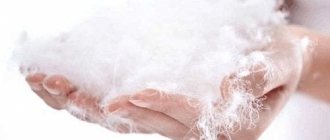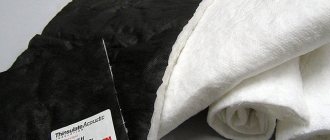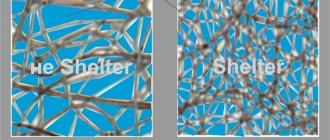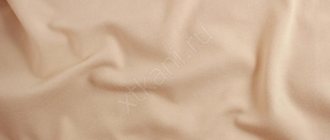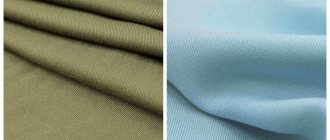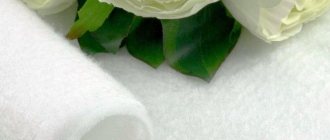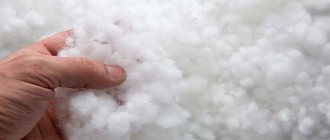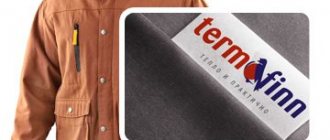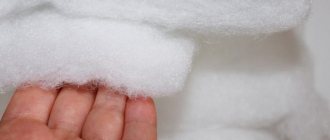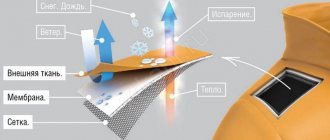Home / Fillers
Back
Published: 06/16/2021
Reading time: 3 min
0
12
Today, various types of insulation materials are manufactured. Alpolux is very popular among them. The product is produced by Russian manufacturers. When creating it, foreign methods are used. Alpolux is a material that meets advanced standards. Alpolux is actively used to insulate clothing. It is also present in other products.
- 1 Description and types of filler
- 2 Material characteristics 2.1 Pros
- 2.2 Cons
Description and types of filler
Alpolux is an environmentally friendly insulation material, one of the options for synthetic down. It contains two components: natural sheep wool (15-30%) and microfiber (from 70%).
Externally, this material resembles a microcellular mesh. This structure gives alpolux a high degree of breathability and allows it to reliably retain heat.
Note! Alpolux consists of 100% primary processed raw materials. There are no foreign elements such as crumbs, glass, etc.
There are various types of filler. They have different degrees of density (g/m2). The main product options are listed in the following table:
| Variety | Characteristics |
| Alpolux 100 | Has a thickness of 12 mm. Designed for temperatures from +5 to -10 degrees. |
| Alpolux 150 | Thickness 22 mm, temperature range up to -22 degrees. |
| Alpolux 200 | Alpolux 200 is designed for temperatures down to -30 degrees. Reaches a thickness of 27 mm. |
| Alpolux 300 | Thickness from 27 mm. Used at temperatures up to -35-40 degrees. |
FEATHER
DOWN/FEather is a natural traditional insulation material; goose Down/Feather is a natural heat insulator in all weather conditions. It represents the most valuable layer of a bird's plumage and is lightweight, freely breathing, and easily absorbs a large volume of air.
Natural down provides pleasant warmth, eliminating the risk of overheating. Down is able to quickly restore its volume and thermal properties after mechanical compression. It has a small transport volume of the finished product and its exceptional durability. Such unique properties can be explained by the structure of the fluff, consisting of individual fluffs, which, on the one hand, repel, and on the other, under pressure, enter into each other.
It is one of the highest quality and most expensive fillings for down jackets. The ideal ratio of such filler is: 80% down, 20% feather. This composition has maximum heat-protective properties. Feather is added to the insulation so that the light fluff does not settle and does not roll into lumps. It serves as a kind of frame that allows the product to keep its shape longer. This design prevents the fluff from falling off.
Some companies:
BILEMI STEEN AGE Arctiline (Russia) Chicco (Italy) O'Hara (Canada) Il Gufo (Italy) Zera (Spain) Premaman (Belgium)
Material characteristics
Alpolux is manufactured using Austrian technology, in accordance with current European requirements. It is created with the addition of selected merino wool. Such natural raw materials consist of villi, the thickness of which is 5 times less than human hair. This feature allows for excellent heat retention. In addition, sheep wool has a high degree of strength. Merino wool products are known for their strength and durability.
In Russia, alpolux is made taking into account the climatic conditions of the country. This product is mainly filled with:
- outerwear (jackets, down jackets);
- ski suits;
- envelopes for babies;
- sleeping bags;
- workwear (uniform, etc.);
- hats, mittens;
- bedding (blankets, pillows).
Alpolux insulation is created using the latest equipment. During its manufacturing process, natural wool pile and microfiber are mixed, giving them an elastic structure. To give the filler the required shape, a special laser meter is used. Next, the material is subjected to heat treatment, which reliably bonds its fibers together (calendering).
Alpolux is a worthy competitor for popular materials. In terms of quality and characteristics, it is not inferior to many types of fillers. Among them are Isosoft, Slimtex, Thinsulate. The following are important characteristics of alpolux.
pros
Insulation has numerous positive aspects. Thanks to such advantages, the choice is often made in its favor. The material is characterized by:
- high heat resistance;
- excellent breathability;
- light weight, strength;
- moderate thickness, allowing the use of insulation when sewing large-sized clothing and other large items;
- excellent tolerability, hypoallergenic;
- environmental friendliness, safety for adults and children;
- inability to wrinkle or deform;
- maintaining shape even after long wear;
- no migration of fibers through the top material.
In clothes with Alpolux filling, you always feel comfortable. Being outside, the owner of such a thing does not freeze, and indoors does not overheat. Alpolux has a high degree of breathability. For this reason, it resists the emergence of the “greenhouse effect”.
Interesting fact! The creators of the insulation claim that the material also has healing properties. This is due to the presence of sheep wool, which can destroy harmful microbes, relieve joint and muscle pain, prevent the development of allergies, and prevent diseases of the musculoskeletal system. Merino wool also prevents unpleasant odors from appearing.
Minuses
The main disadvantages of the material in question include its fairly high cost (from 150 rubles per 1 meter). Other disadvantages of Alpolux filler are low plasticity (less than synthetic fluff). In addition, it is characterized by increased rigidity due to double-sided calendering.
THERMOFIBER, HOLLOFAN, HOLLOFIBER and THINSULATE (made from hollow fibers).
THERMOFIBER - unlike traditional insulation such as padding polyester, it is made of hollow, highly crimped fibers using heat-setting technology. Each elementary fiber has an air cavity inside, which significantly improves the thermal insulation properties of the fabric due to the high thermal conductivity of air. The diameter of an elementary hollow fiber is 30% larger than that of a conventional fiber, which provides, with the same surface density, a greater volume of the web. Large diameter hollow fibers give the canvas better breathability. Tests for moisture capacity have shown that Thermofiber absorbs moisture 10% less than Sintepon and Thinsulate, which characterizes its lower moisture capacity along with a higher drying rate.
Features of care
Alpolux is able to serve its owners for a long time. To do this, you must follow all the rules for handling it. Wash the insulation manually or in a machine with the delicate cycle set. It is best to use liquid products and gentle stain removers. During treatment, the temperature of the water is no more than +40 °C.
Author:
Zakharova Nina Afanasyevna
I hope you like my article! If you find any shortcomings, just write to me about it! I am always ready for a conversation and will answer any questions you have, ask them!
